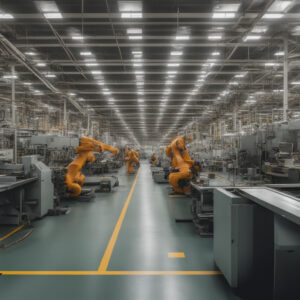The impact of automation on manufacturing jobs is a topic that sparks both excitement and concern. As automation technologies advance at a rapid pace, they are reshaping the manufacturing sector in profound ways, bringing about increased efficiency, precision, and productivity. However, this transformation also raises critical questions about the future of employment in the industry.
Automation, driven by robotics, artificial intelligence, and machine learning, is revolutionizing how products are made. Automated systems can perform repetitive tasks with greater accuracy and consistency than human workers, reducing errors and waste. This leads to higher quality products and faster production times, enabling manufacturers to meet growing consumer demands and stay competitive in a global market.
But the rise of automation also means a significant shift in the nature of manufacturing jobs. Traditional roles that involve manual labor and routine tasks are increasingly being replaced by machines. This has led to a decline in demand for low-skilled labor, posing a challenge for workers who may not have the skills needed to adapt to new roles within the automated environment.
However, automation is not just about job displacement. It also creates new opportunities for workers, especially those with skills in technology, engineering, and data analysis. As machines take over routine tasks, there is a growing need for human oversight, maintenance, and programming of these automated systems. This shift necessitates a focus on reskilling and upskilling the workforce to ensure that workers can transition into these new roles.
Moreover, automation can lead to the creation of entirely new job categories that did not exist before. For example, roles in managing and analyzing the vast amounts of data generated by automated systems, or in developing and implementing new automation technologies, are becoming increasingly important. These jobs often require higher levels of education and training, highlighting the importance of investing in education and workforce development programs.
In conclusion, the impact of automation on manufacturing jobs is a complex and multifaceted issue. While automation brings undeniable benefits in terms of efficiency and productivity, it also poses challenges for the workforce. Addressing these challenges requires a proactive approach to education and training, ensuring that workers are equipped with the skills needed to thrive in the evolving manufacturing landscape. By embracing these changes and preparing for the future, we can harness the potential of automation to create a more dynamic and prosperous manufacturing sector.

